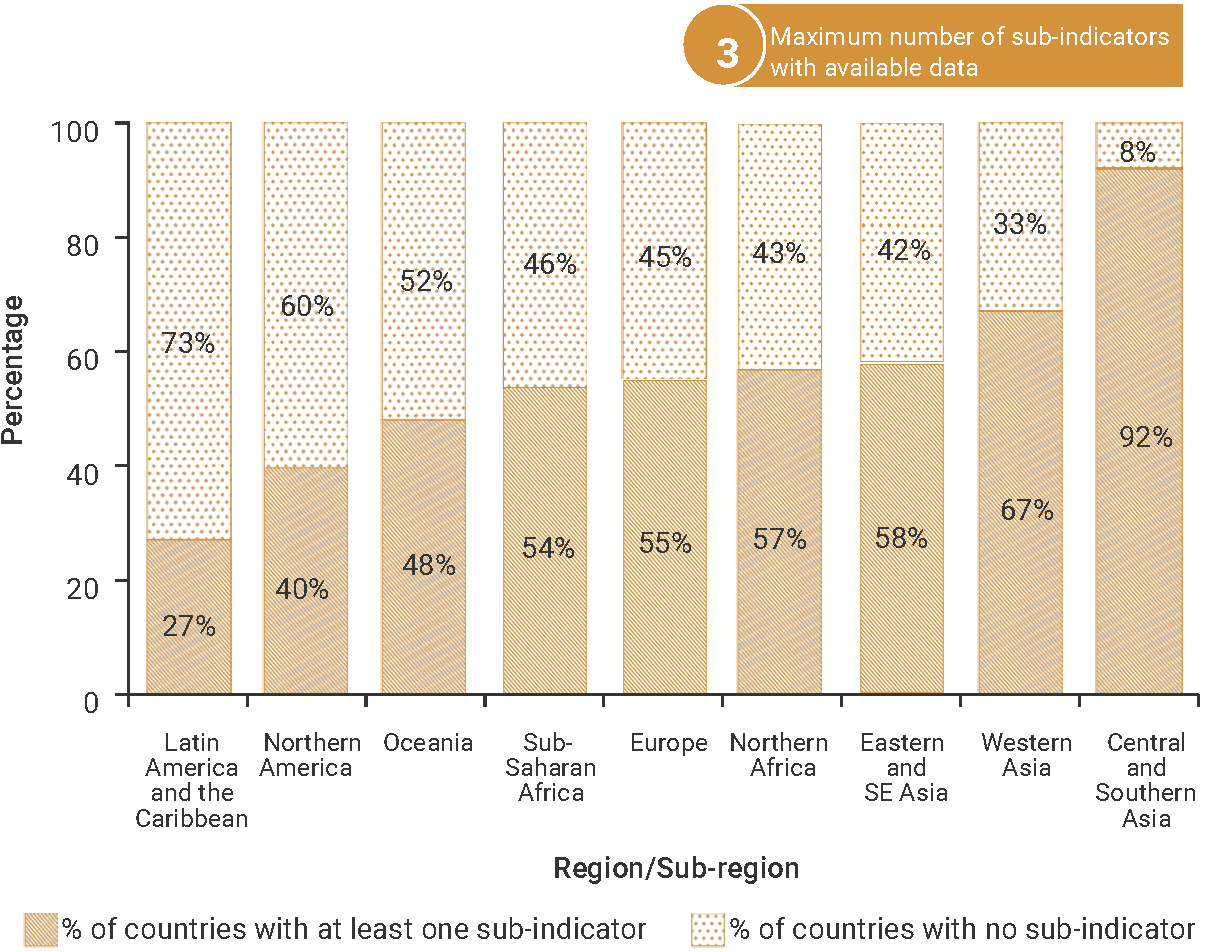SDG Indicator 11.b.2: Proportion of local governments that adopt and implement local disaster risk reduction strategies in line with national disaster risk reduction strategies
1. Key features and metadata
Definition: This indicator measures the ratio of the number of local governments with local disaster risk reduction (DRR) strategies in line with national strategies.
| Sub-indicator | Disaggregated by |
|---|---|
|
SG_GOV_LOGV Number of local governments (Number) |
No current data disaggregation available.
|
|
SG_DSR_SILN Number of local governments that adopt and implement local DRR strategies in line with national strategies (Number) |
|
|
SG_DSR_SILS Proportion of local governments that adopt and implement local disaster risk reduction strategies in line with national disaster risk reduction strategies (%) |
Sources of information: Data collected from national line ministries, national disaster management agencies, civil protection agencies, and meteorological agencies via the Sendai Framework Monitor (UNDRR).
Related SDG Indicators: 1.5.4 and 13.1.3 (duplicates) and 13.1.2 (Number of countries that adopt and implement national disaster risk reduction strategies in line with the Sendai Framework for Disaster Risk Reduction 2015-2030).
2. Data availability by region, SDG Global Database, as of 02 July 2025

3. Proposed disaggregation, links to policymaking and its impact
| Proposed disaggregation | Link to policymaking | Impact |
|---|---|---|
|
By City (%) (> 50,000 inhabitants) Applies to:
|
This disaggregation would emphasize the commitment of the largest cities in implementing the Sendai Framework by developing locally adapted and inclusive strategic, planning and operational frameworks for reducing existing risks, preventing the occurrence of new ones and strengthening society’s resilience (UNGA 2016c; UNDRR 2017). Local strategies should reflect the local context (i.e. impacts of climate change or urban and population vulnerability) and detected hazards. It should also focus on planning and on-the-ground measures in collaboration with all concerned stakeholders. Of particular importance is the engagement of all segments of society in the planning process, encompassing gender, age, disability. and cultural considerations. More specifically, the most vulnerable (i.e. the poor, women and youth). Furthermore, effective cross-sectoral and policy mainstreaming mechanisms should be put in place to ensure the successful integration of DRR objectives into other local policy and sectoral frameworks, programming, instruments, and interventions(UNDRR 2022b). The disaggregation links to the Sendai Framework for Disaster Risk Reduction, Target E: Substantially increase the number of countries with national and local disaster risk reduction strategies by 2020 (UN 2015a). |
Improved evidence-based understanding of the impact of disasters on humans, economy and the environment would lead to improved conditions. Having in place adequate local policies that prevent, reduce and mitigate the impacts of such disasters could be beneficial for all three dimensions of sustainable development(UNDRR 2023; UNDRR n.d.a). |

